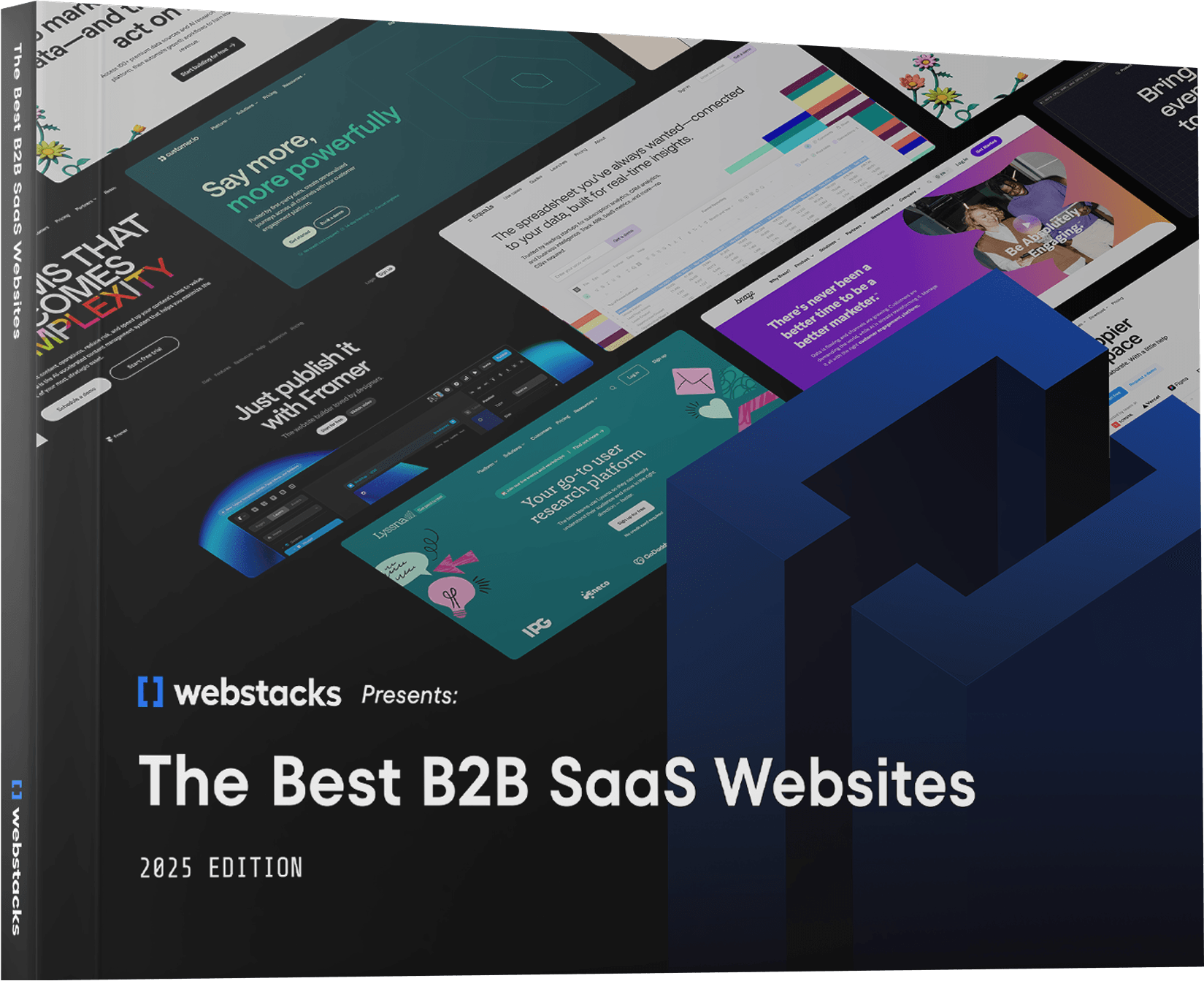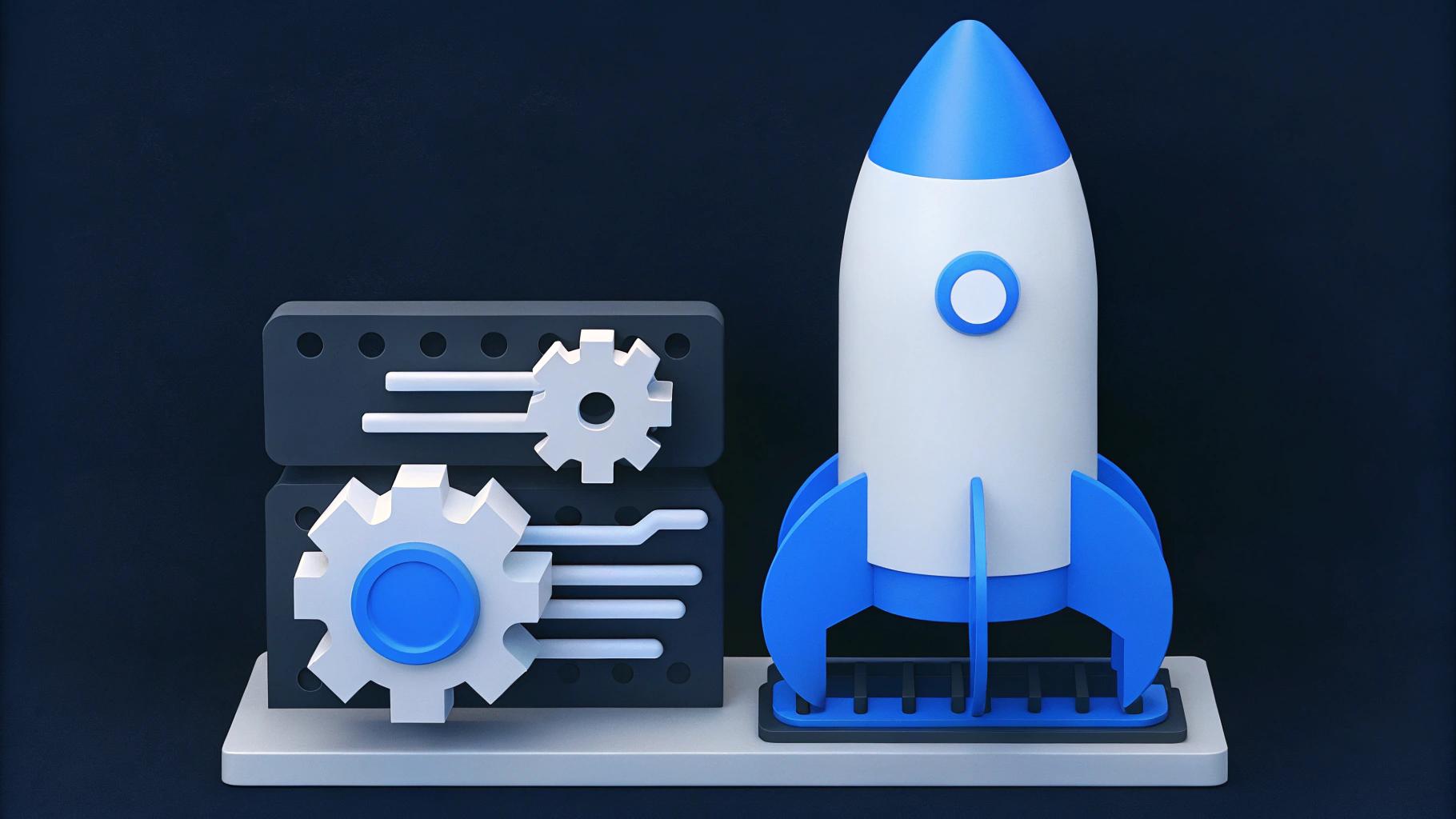What separates a good SaaS website from a great one? A great website does more than look nice. It clearly communicates your product’s value, builds trust, and guides visitors toward becoming customers.
Your website is one of your most powerful growth tools. In this article, we’ll cover ten SaaS best practices to help you improve conversions and create a better user experience on your website.
In brief:
- A great SaaS website communicates value, builds trust, and drives conversions.
- Clear navigation, interactive demos, and tailored messaging improve user engagement.
- Strong SEO, site architecture, and high-quality content attract the right audience.
- Transparent pricing, data-driven testing, and continuous tracking drive long-term growth.

SaaS Website Best Practices to Boost Your Business
1. Fine-tune the User Experience of Your SaaS Website
Your website’s user experience has a direct impact on conversions. If visitors struggle to find what they need or face too many obstacles, they’re more likely to leave without taking action. A well-designed experience keeps users engaged, guiding them smoothly toward sign-ups, demo requests, or purchases.
Navigation is a key part of this experience. When menus are overloaded with options or page layouts feel cluttered, users waste time searching for information instead of moving forward. Keeping navigation simple and focused makes it easier for visitors to find what they need without frustration. Since mobile traffic accounts for a large share of web visits, your site should also be fully responsive.
Beyond structure, every extra click or unnecessary step in a user’s journey increases the chances of drop-off. Mapping out the most important paths—such as signing up, exploring features, or reading case studies—helps identify and remove friction points. One way to simplify navigation is by using progressive disclosure, where less critical information stays hidden until the user needs it. This prevents overwhelming visitors with too many choices at once.
Subtle design details can also improve engagement. Microinteractions, like hover effects on buttons, real-time form validation, or progress indicators, provide feedback that reassures users and keeps them moving through the site. These small touches make interactions feel natural and intuitive.
Since it’s easy to overlook usability issues from an internal perspective, testing with real users is invaluable. What seems obvious to your team may be confusing to first-time visitors. Regular usability testing helps uncover these problem areas, allowing you to fine-tune the experience so users can focus on your product rather than figuring out how to navigate your site.
2. Showcase Your SaaS Product Effectively
Static screenshots aren’t enough to sell your product anymore. Customers want to see how it works in action, and most prefer watching a quick demo or interacting with the product rather than reading a long description. The more engaging and hands-on your product presentation, the easier it is for potential customers to understand its value.
Here are some effective ways to bring your product to life:
- Interactive product tours – Let visitors explore core features without requiring a sign-up. A hands-on experience builds confidence and gives users a better understanding of what your product can do.
- Contextual use cases – Show real-world scenarios where your product solves common problems. When prospects see how your tool fits into their workflow, they’re more likely to see its value.
- Short demo videos (under 2 minutes) – Quick, digestible videos highlighting key workflows keep visitors engaged without overwhelming them.
- Feature spotlights – Dynamically highlight different aspects of your product based on visitor behavior. If someone arrives from an ad about automation, show them automation-related features first.
- Animated GIFs – Use subtle animations to demonstrate key actions without requiring full video playback. These can make your interface feel more intuitive and engaging.
- Guided interactive demos with tooltips – For complex products, tooltips can progressively reveal functionality as users explore.
Not all buyers look for the same information, so tailor product demonstrations to different audiences. Technical decision-makers may focus on integrations and APIs, while end-users want to see ease of use.
3. Be Conversion-Driven in Your SaaS Website Design
Every element on your website should guide visitors toward taking action. A conversion-focused SaaS website removes friction, builds trust, and makes it easy for users to move forward.
Here’s how to create a website that drives conversions:
- Use clear, action-driven CTAs – Instead of generic phrases like "Sign up," use benefit-focused language such as "Start saving time today."
- Place conversion points strategically – Position CTAs where users are most engaged, such as after a product demo or feature explanation.
- Keep forms simple – Shorter forms feel easier to complete. Multi-step forms can also make the process less overwhelming by breaking it into smaller steps.
- Incorporate trust signals – Add testimonials, security badges, or customer logos near conversion points to reinforce credibility.
- Leverage cognitive biases – The endowed progress effect (showing users they’ve already made progress) encourages completion. Scarcity and urgency elements, like limited-time offers or available consultation slots, can also drive action.
- Use dynamic social proof – Showing real-time notifications of other users signing up or engaging with your product creates momentum and encourages visitors to take action.
Conversion optimization isn’t just about adjusting button colors or layouts. The goal is to create a seamless path that makes signing up or requesting a demo feel like the natural next step. Testing different approaches will help you see what works best for your audience.
4. Structure Your Site for Easy Navigation
Your site architecture affects how easily users find information and how well search engines understand your content.
Here’s how to build a site that’s easy to navigate:
- Structure menus and categories based on how users naturally search for information.
- Organize URLs in a way that reflects content hierarchy and makes pages easy to find.
- Internal links should guide visitors to relevant content while strengthening SEO for high-priority pages.
- Provide alternative navigation paths with links to key sections, support resources, and legal pages.
Many SaaS companies use a hub-and-spoke model, where broad pillar pages serve as central resources, linking to more detailed content. This approach improves SEO while helping users discover relevant information at different stages of their journey.
For teams managing frequent updates, modular web design makes it easier to rearrange and scale website components without major redesigns. Large SaaS companies also benefit from industry-specific navigation paths that direct users to content tailored to their needs.
Users decide where to click within seconds. To make navigation as intuitive as possible, test your site’s structure with real users using tree testing and card sorting exercises. These insights help refine your architecture so visitors can find what they need without frustration.

5. Scale High-Quality Content Production
Content builds trust and positions your brand as an authority. Instead of focusing solely on technical specs, highlight what your product helps users accomplish. Content that resonates with your audience is more likely to engage them and drive conversions.
To create valuable SaaS content at scale:
- Write problem-solving blog posts – Address specific pain points your target audience faces.
- Organize resource centers – Structure content by user role, industry, or use case to make it easier to find relevant information.
- Emphasize benefits over features – Show how your product improves workflows and solves real-world challenges.
- Keep content updated – Reflect new product features, industry trends, and customer feedback.
A modular content approach makes production more efficient. Instead of creating each piece from scratch, break content into reusable components—such as key messaging, data points, and visuals—that can be repurposed across blog posts, landing pages, social media, and email campaigns.
Beyond written content, interactive tools can improve engagement. Consider adding ROI calculators or diagnostic quizzes that help prospects see the value of your solution in real terms.
For long-term credibility, invest in proprietary research and industry reports. Original data gives your brand authority, attracts backlinks, and provides valuable insights for potential customers. When done well, this type of content can generate more engagement than traditional blog posts alone.
6. Follow SEO Best Practices for SaaS Websites
SEO for SaaS websites requires more than basic keyword targeting. With high competition in the software space, a focused strategy helps attract the right audience and drive conversions.
Here are some key areas to focus on:
- Target problem-focused keywords that align with what potential customers are searching for.
- Create landing pages tailored to specific use cases and industries to capture relevant traffic.
- Build authoritative backlinks by publishing original research, case studies, and data-driven content.
- Use purchase-intent keywords, such as comparison queries and solution-based searches, to attract decision-ready users.
Since SaaS-related keywords are highly competitive, structuring content with topic clusters strengthens your site’s authority. A broad pillar page covering a key feature or problem can link to related subpages, creating a logical structure that improves search rankings.
Schema markup designed for software products helps search engines understand your offering, improving visibility in search results. For SaaS companies expanding globally, hreflang tags direct users to the right regional content.
On the technical side, canonical tags prevent duplicate content issues on similar product pages, and segmented XML sitemaps help search engines crawl and index your most important content efficiently.
7. Build Brand Equity Through Your SaaS Website
A strong brand helps you stand out and build trust with customers. Branding is more than just logos and colors—it shapes how people perceive your company and why they choose you over competitors.
Customers connect with companies that feel authentic, so your website should highlight what makes your SaaS product unique. One of the best ways to do this is by sharing real customer success stories. Instead of just listing features, show how your product solves real problems and improves workflows.
Beyond storytelling, thought leadership helps position your company as an authority in your industry. Publishing original insights, expert opinions, and detailed guides attracts potential customers looking for informed solutions. A strong brand voice ties everything together. Defining a clear tone and communication style allows your messaging to feel cohesive across your website, emails, and customer interactions.
8. Have Clear and Transparent Pricing
Clear pricing builds trust and helps potential customers decide if your product fits their needs. SaaS buyers expect transparency, and a pricing page should make decision-making simple.
A great pricing page includes several elements that guide prospects toward the right plan:
- Clearly defined plan tiers – Explain who each plan is for and highlight key differences.
- Comparison tables – Show features across plans so prospects can easily compare options.
- Interactive calculators – Help users estimate costs for usage-based pricing models.
- FAQs – Address common pricing concerns like contract terms, billing cycles, and upgrade options.
Psychological pricing tactics can also influence decisions. Placing a preferred plan between higher and lower-priced options makes it more attractive, while emphasizing annual billing discounts encourages longer commitments.
For higher-priced SaaS solutions, buyers need to understand the value, not just the cost. Supporting the pricing page with ROI estimates, customer testimonials, or case studies can justify the investment. If your pricing is complex, offering interactive tools that let users model different usage scenarios can make pricing feel more accessible.
9. Monitor and Evaluate Website Analytics
Tracking website analytics helps you understand how visitors interact with your site and where potential customers drop off in the conversion process. By analyzing key metrics, you can identify friction points and make data-driven improvements.
Important SaaS website metrics to track include:
- Visitor-to-trial conversion rate – Measures how effectively your site turns visitors into trial users.
- Trial-to-paid conversion rate – Tracks how many trial users become paying customers.
- Customer acquisition cost (CAC) by traffic source – Helps assess which marketing channels bring in cost-effective leads.
- Feature usage during trial periods – Identifies which features drive engagement and conversion.
Tools like Google Analytics, Mixpanel, and Amplitude can provide insights into user behavior, helping you refine your website experience and optimize conversion rates.
10. Conduct Website Experiments
Testing different elements of your website helps you refine user experience and increase conversions. Instead of making changes based on assumptions, structured experimentation allows you to see what actually works.
Start by testing key elements that influence conversions:
- Value proposition language on landing pages
- CTA placement, design, and wording
- Pricing page layouts and feature presentation
- Signup flow length and required information
Focus on high-traffic, high-impact pages first, and test one element at a time to isolate results. Tools like Optimizely and VWO make it easy to run experiments, even for smaller teams.
Get the Best Results from Your SaaS Website
A great SaaS website is a powerful tool for attracting, converting, and retaining customers. The best websites combine compelling visuals with data-driven optimization, so that every page moves visitors closer to action.
Improving your website isn’t a one-time project. Start by identifying your biggest conversion bottlenecks and making targeted adjustments. Small, strategic changes to high-traffic pages often have a greater impact than a full redesign of less-visited sections. Track your progress over time, measuring against both industry standards and your own historical data to see what’s working.
Looking for inspiration? Explore real-world examples of top-performing SaaS websites and discover what makes them successful. Download our guide to the best B2B SaaS websites for insights, strategies, and design trends that can help you refine your own site.





